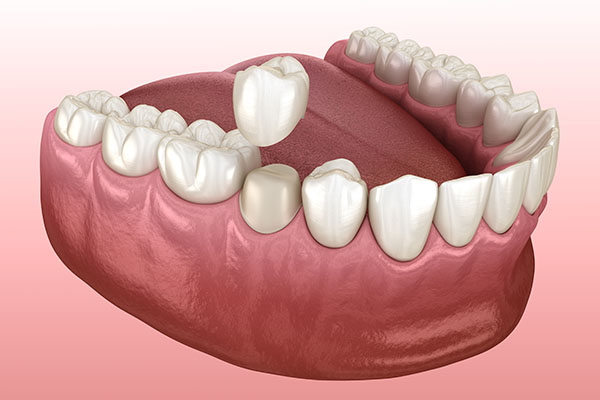Why a Dentist May Recommend Braces for Teeth Straightening

Braces have been used for teeth straightening treatments for centuries, and they remain one of the options a dentist might recommend for patients with teeth alignment issues like overbites, crossbites, crooked, and misaligned teeth.
Besides ruining the way your smile looks, these teeth alignment problems can also lead to symptoms like headaches, toothaches, and jaw pain. Poorly aligned teeth are also prone to being damaged by the uneven pressure caused by other teeth.
Braces and many other orthodontic appliances used to straighten teeth work by constantly applying pressure on the patient’s teeth, moving them into a more natural alignment over time. Braces are one of the most effective ways to address alignment issues since they can fix problems caused by poor jaw or teeth alignment. Other teeth straightening options like clear aligners are only effective on teeth alignment problems caused by poor teeth positioning.
Reasons a dentist might recommend braces for teeth straightening treatments
Some of the reasons a dentist might recommend teeth straightening with braces for some patients include:
1. Poorly aligned teeth due to abnormal jaw spacing
A general dentist might recommend braces for patients with malocclusions caused by their jaws not being correctly aligned. Examples of dental issues caused by poor jaw alignment include overbites and underbites. Clear aligners would not do much for such patients, but braces would be one of the treatment options explored. Other appliances that might be combined with braces include headgear, upper jaw expanders, and reverse-pull face masks.
2. Severely rotated teeth
Patients with severely rotated teeth might have to use braces to achieve the straighter smile they desire. Clear aligners can be used to rotate teeth that are up to 20 degrees out of position, but braces are typically needed for anything more than that. People with severely rotated teeth are also more likely to have severe orthodontic issues – like overbites – that require braces.
3. Teeth that require intrusion or extrusion
Braces are typically recommended for patients who need intrusion or extrusion (their teeth need to be moved down or up) as part of their treatment since clear aligners cannot be used to provide vertical force.
4. The patient might not be ready for clear aligners
Braces are typically recommended for younger patients since treatment with clear aligners requires a certain level of responsibility children might not have. Clear aligners must be worn for at least 20 hours daily for the treatment to be effective. Skipping days or not wearing clear aligners long enough regularly diminishes the effectiveness of the treatment.
Braces are fixed in place once placed by a dentist, so there is no need to remember to wear them daily. Some adults who prefer not to deal with the hassle of making wearing clear aligners a part of their daily routines might be better off with braces.
5. Large gaps between teeth
Patients with large gaps between their teeth – medically termed diastema – might need braces to correct their alignment problems since clear aligners can only fix small gaps. Depending on the severity of the gaps between the patient’s teeth, additional treatments – like composite bonding – might be needed to close up all their gaps.
Important things patients should know about braces
Metal braces are the most commonly used type of braces, and they are made up of brackets, wires, and elastic bands. A bracket is bonded on each of the patient’s teeth and the wires are used to link the brackets on each half of their jaw. The more taut these wires are, the more force the braces apply on the patient’s teeth, advancing their positioning over time. The elastic bands go around the brackets and connect the dental arcs.
Some of the other types of braces patients get to choose from include:
- Ceramic braces: These are a lot like metal braces, but the components are swapped out for more aesthetic varieties. Instead of metal brackets and wires, patients get tooth-colored or transparent brackets and wires
- Lingual braces: These braces have metal components just like traditional braces, but the brackets and wires are attached to the back of the patient’s teeth, instead of the front, making them less visible
- Self-ligating braces: These look a lot like metal braces, but they do not require elastic bands since they have an in-build system that keeps the archwires in place
Get the straight smile you have always wanted
Ready to put your teeth alignment issues behind you? Call or stop by our Alexandria office for a consultation with our dentist. You might get to show off your improved smile in as little as 12 months.
Request an appointment here: https://alexoldtowndental.com or call Alexandria Old Town Dental at (703) 763-1078 for an appointment in our Alexandria office.
Check out what others are saying about our dental services on Yelp: Clear Braces in Alexandria, VA.
Related Posts
Clear braces and other orthodontic advances make teeth straightening treatment more attractive to many patients. From clear aligners to ceramic braces, these innovative treatments allow patients to align their smiles without noticeable metal brackets and wires. Thanks to these alternatives, teeth straightening has become more accessible to those who want to avoid traditional metal braces.Traditional…
If your child has crooked or poorly aligned teeth, kids braces are one of the options that can be used to straighten his or her teeth. Continue reading to learn more about kids' braces.Dentists generally recommend children get orthodontic treatments once they reach the age of seven. That is when the final set of molars…
While researching options for teeth straightening, many patients consider the use of clear braces instead of traditional metal braces. There are pros and cons to each option. Before making a decision, learning more about the differences between clear braces options and traditional teeth straightening can help patients decide which route works for their circumstances.Traditional metal…
The term “invisible braces” is commonly used to refer to an orthodontic system that is less conspicuous than traditional braces. Invisible braces can correct numerous problems. These include crowded teeth and crooked or spaced teeth. They may also be ideal for a few teeth that are out of position. Read on to find out how…


